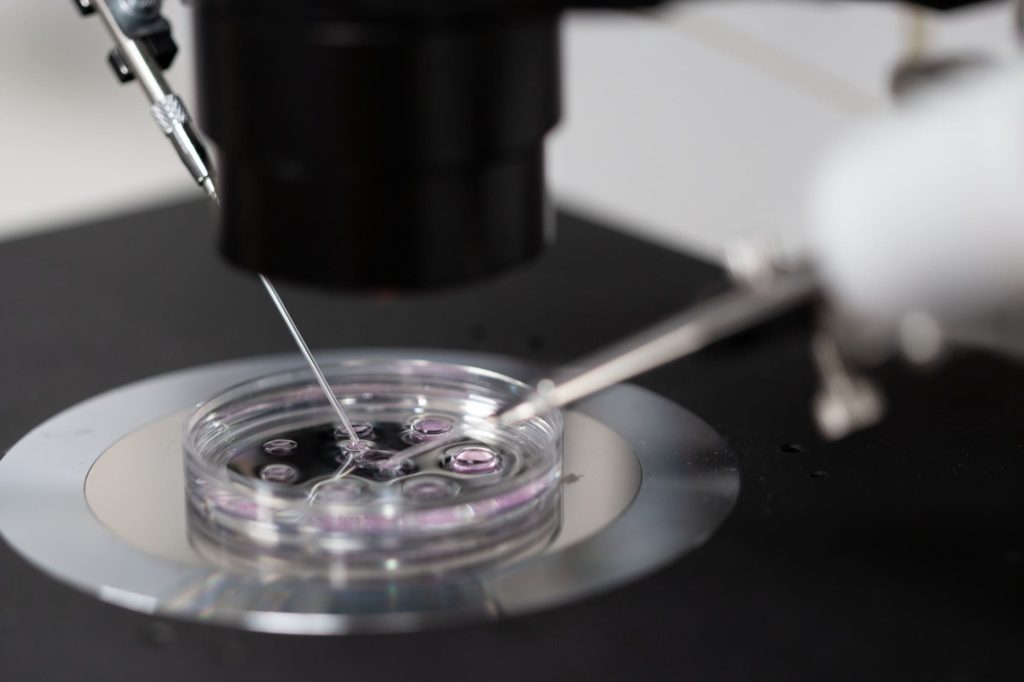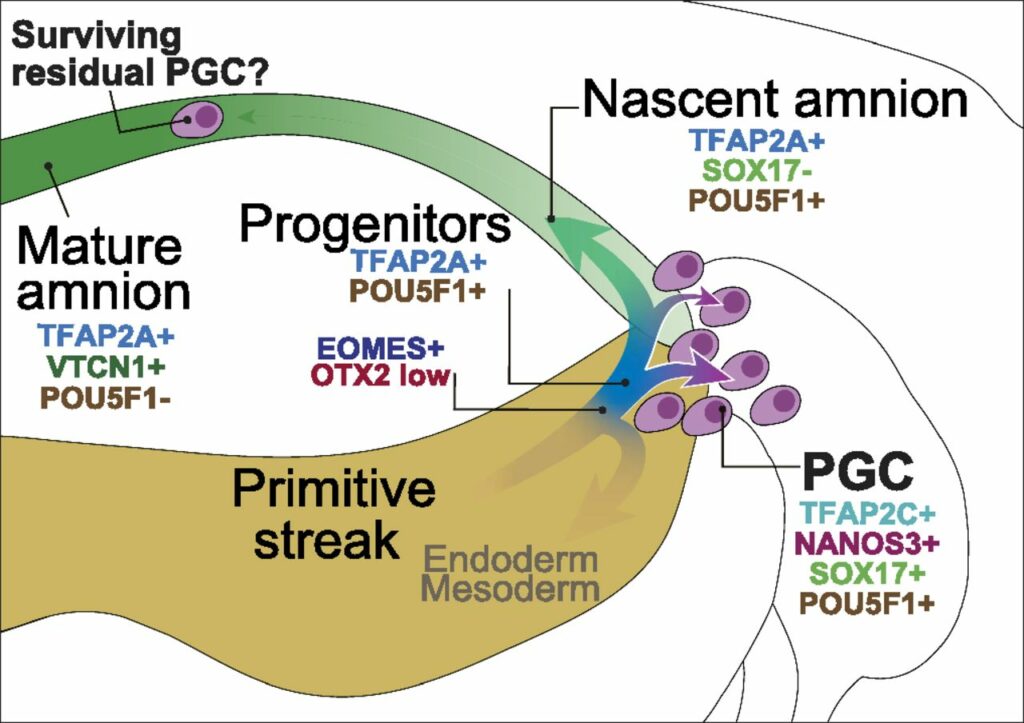Genetics of female reproductive longevity
August 4, 2021
Read more
The precursors of gametes originate around day fourteen of human development, but direct observations are impossible. The study uses multiple approaches to elucidate their likely source in early embryos.
Castillo-Venzor A et al. Origin and segregation of the human germline. Life Sci Alliance. 2023 May 22;6(8):e202201706. DOI: 10.26508/lsa.202201706.

A schematic for the origin of PGCs in humans. PGCs are specified from a population of TFAP2A-positive progenitors at the posterior end of the embryonic disc. PGCs in the amnion specified at an earlier stage might contribute to the founder PGC pool if they can migrate against the flow of nascent amnion expansion.
Germline–soma segregation occurs during weeks 2–3 in human gastrulating embryos. This study investigated the dynamics of human primordial germ cell (PGCs) specification using in vitro models with temporally resolved single-cell transcriptomics and in-depth characterisation using in vivo datasets from human and nonhuman primates, including a 3D marmoset reference atlas. The study shows that both the PGCs and amnion arise from transcriptionally similar TFAP2A-positive progenitors at the posterior end of the embryo. A mutation in TFAP2A abrogates the PGC fate but without detectably affecting the amnion. TFAP2C subsequently replaces TFAP2A as an essential regulator of the PGC fate.